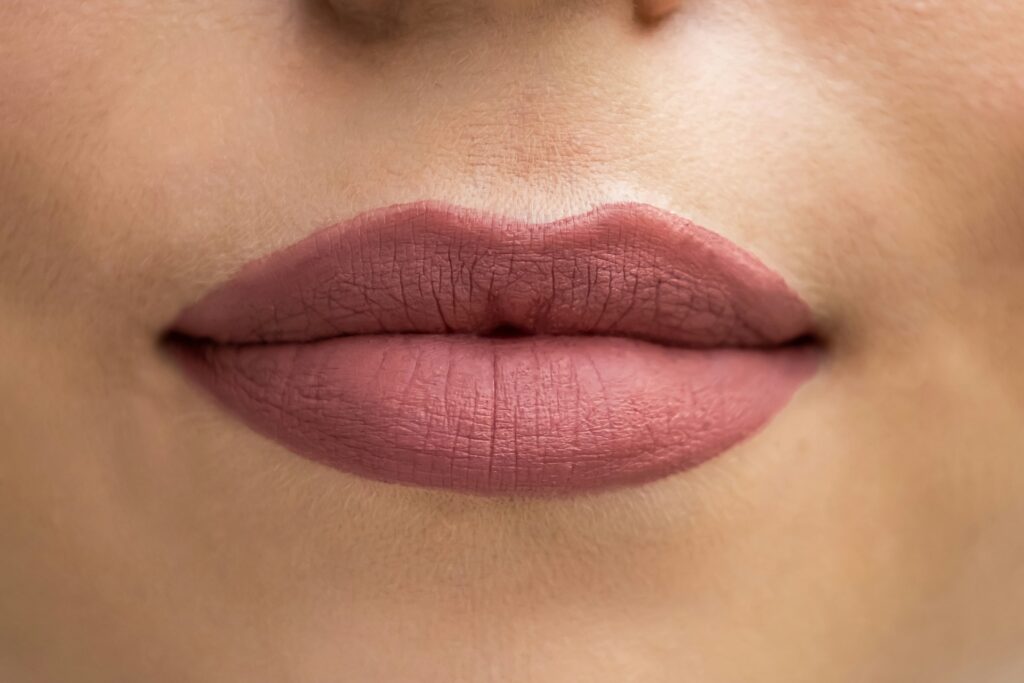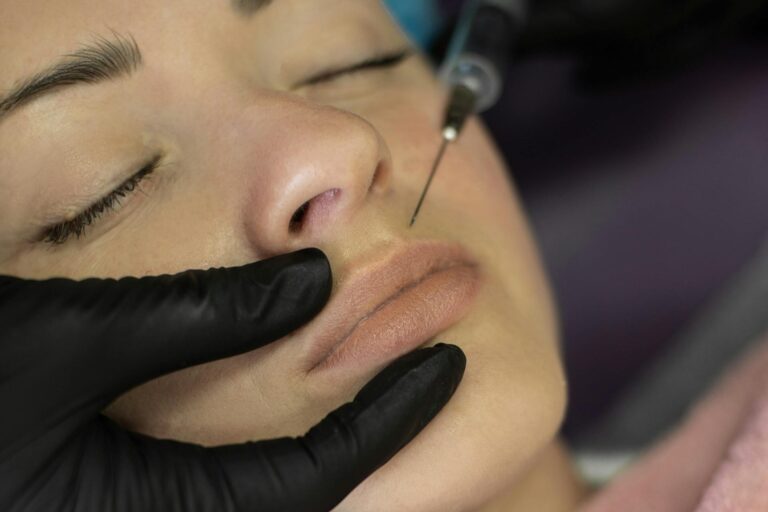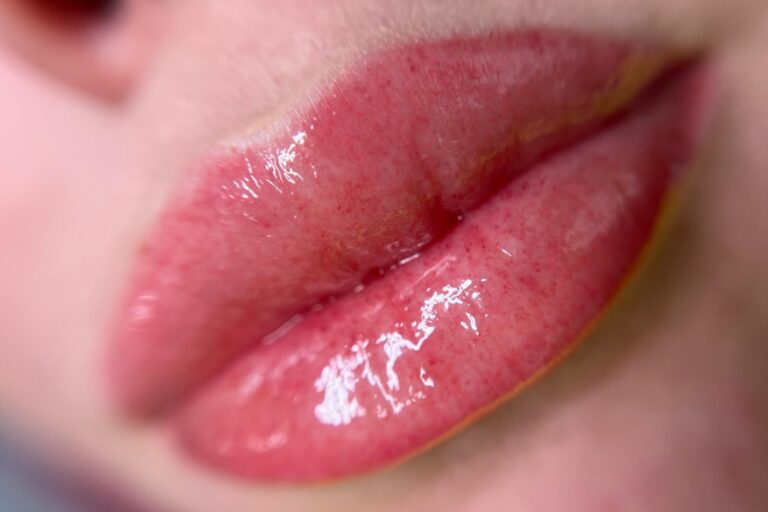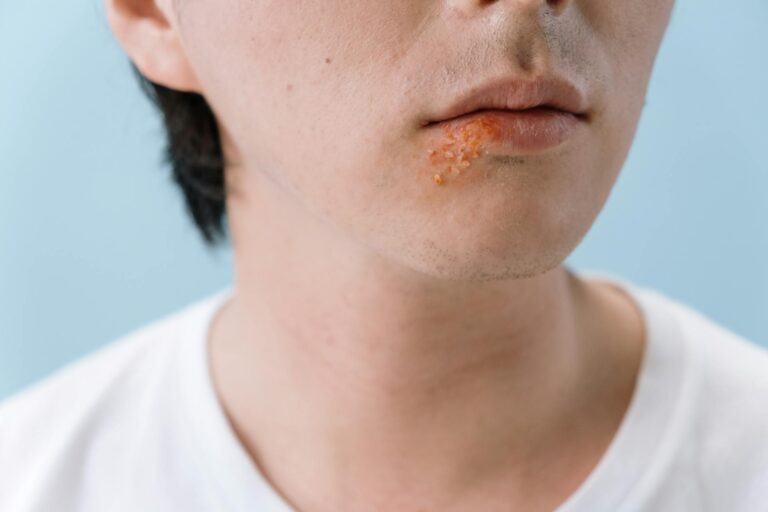
Lip fillers have gained significant popularity among individuals looking to enhance their smiles and boost their confidence. This guide aims to provide a comprehensive overview of lip fillers, covering everything from the different types available—such as hyaluronic acid and collagen—to the benefits they offer, including fuller lips and improved symmetry.
Additionally, it delves into potential risks and side effects, offers guidance on how to prepare for your first treatment, and outlines what to expect during and after the procedure. Whether you are contemplating lip fillers for the first time or simply seeking more information about the process, this article will equip you with the essential knowledge needed to make an informed decision.
What Are Lip Fillers?

Lip fillers have become a widely sought-after cosmetic treatment, intended to enhance the appearance of the lips by increasing volume, improving shape, and achieving a more symmetrical look.
By utilising dermal fillers, particularly those that contain hyaluronic acid, individuals interested in lip augmentation can achieve fuller lips that enhance their overall facial aesthetics and complement their beauty routines.
This non-surgical procedure has gained significant popularity due to its capacity to deliver temporary results with minimal downtime, making it an attractive option for those wishing to refine their lip contour and improve hydration.
How Do Lip Fillers Work?
Lip fillers are designed to enhance the lips by injecting hyaluronic acid, a substance naturally found in the body, into specific areas to create volume and refine the contour. This non-surgical treatment offers immediate results and allows for a customised approach that can be tailored during the procedure to achieve individual aesthetic goals.
The process starts with a consultation in which licensed practitioners evaluate the patient’s facial structure and discuss their desired outcomes. To minimise discomfort, a numbing agent is typically applied before the injections.
During the procedure, which usually takes about 30 minutes, the practitioner carefully administers the fillers using fine needles. Safety is a top priority; practitioners closely monitor for any potential side effects, such as swelling or bruising.
After the procedure, patients are provided with detailed instructions and are reminded of the importance of follow-up appointments. These appointments are crucial for assessing results and making any necessary adjustments to ensure satisfaction with the final appearance.
What Are the Different Types of Lip Fillers?
There are several types of lip fillers available, and each one offers distinct benefits and results tailored to individual needs and cosmetic goals.
One of the most common options is hyaluronic acid fillers, which are known for their ability to provide hydration and volume. Additionally, collagen fillers can enhance the texture of the lips, while fat transfer fillers use the patient’s own fat to achieve a more natural look.
There are also synthetic fillers available, which offer longer-lasting results. Each choice has its unique advantages, making it essential to consider what aligns best with personal preferences and desired outcomes.
1. Hyaluronic Acid Fillers
Hyaluronic acid fillers have emerged as one of the most popular options for lip enhancement, thanks to their ability to provide natural hydration and volume while offering temporary results that can be adjusted as needed.
These innovative injectables function by drawing moisture to the lips, resulting in a plumper and more defined contour that enhances overall facial symmetry.
Commonly used for contouring and augmenting the lips, these fillers effectively address volume loss and improve the shape of the lip line, which is particularly appealing to individuals seeking a more youthful appearance.
Patient reviews often emphasise their satisfaction with the natural-looking results and the convenience of adjusting the filler over time, illustrating how this flexibility aligns with individual preferences.
However, it is essential to prioritise safety by consulting with a qualified practitioner who possesses a thorough understanding of facial anatomy. This approach helps minimise the risks associated with the procedure and ensures optimal outcomes.
2. Collagen Fillers
Collagen fillers were among the earliest injectable fillers used for enhancing lips, recognised for their ability to improve lip texture and create a fuller appearance.
Over time, patients have sought out various filler options that offer longer-lasting results, such as hyaluronic acid and poly-L-lactic acid. While collagen fillers generally require frequent maintenance treatments to maintain the desired volume, these other alternatives often claim to provide greater longevity, thereby reducing the need for regular upkeep.
It is important for patients to also consider the potential risks associated with each type of filler, including the possibility of allergic reactions to certain components. Experts frequently emphasise the significance of making personalised choices based on individual needs, as this approach can lead to greater patient satisfaction and optimal results while effectively managing any associated risks.
3. Fat Transfer Fillers
Fat transfer fillers utilise the patient’s own fat to enhance lip volume, offering a natural augmentation option that tends to provide longer-lasting results.
This innovative cosmetic procedure begins with the careful extraction of fat from areas such as the abdomen or thighs using a minimally invasive technique known as liposuction. Once the fat is processed and purified, a specialist skillfully injects it into the targeted areas of the lips, resulting in a plump and youthful appearance.
Many patients have reported positive experiences, noting that they not only appreciated the natural look achieved but also felt a boost in self-confidence. While maintenance treatments may be needed to sustain the desired volume, any risks—such as mild bruising or swelling—are generally minimal when compared to synthetic fillers.
The fat transfer process is particularly appealing because it offers the dual benefit of body contouring alongside facial enhancement.
4. Synthetic Fillers
Synthetic fillers present a long-term solution for lip enhancement, offering lasting volume and definition, which many individuals prefer when seeking a more permanent option.
These fillers are designed to replicate the body’s natural substances, ensuring consistent and reliable outcomes. They come with several advantages, such as extended longevity and the possibility of reducing the frequency of touch-ups. However, the price of lip fillers in the UK can vary significantly depending on the type of filler used and the expertise of the practitioner, making it important to consider the overall cost alongside the desired results.
It is essential for users to choose experienced practitioners, as improperly applied synthetic fillers can result in adverse side effects. Ethical considerations also play a significant role; understanding the implications of choosing synthetic versus natural options is vital for anyone considering lip enhancement.
The potential for adverse reactions and the overall impact on one’s appearance should be carefully weighed when making this decision.
What Are the Benefits of Lip Fillers?

Lip fillers provide a range of benefits, such as fuller lips, improved lip symmetry, and enhanced definition.
These enhancements enable individuals to achieve their desired aesthetic goals, all while boosting their confidence and self-esteem.
1. Fuller Lips
One of the most sought-after benefits of lip fillers is the ability to achieve fuller lips, which enhances the overall volume and appearance of the face.
As more individuals look to improve their facial aesthetics, the significance of fuller lips is becoming increasingly clear. This straightforward yet transformative change can greatly enhance facial symmetry, directing attention to one’s smile and overall expression.
Many patients have reported an increase in self-esteem and confidence after the procedure, often sharing testimonials about how enhanced lips have made them feel more attractive and youthful. The popularity of this cosmetic enhancement has been further amplified by social media trends, where influencers and celebrities proudly showcase their fuller lips, encouraging others to consider this change as well.
The desire for fuller lips has evolved from a mere trend into a cultural shift that celebrates and enhances natural beauty.
2. Improved Lip Symmetry
Lip fillers can greatly enhance lip symmetry, offering a more balanced and harmonious appearance that elevates overall facial aesthetics.
These treatments employ advanced injection techniques, enabling practitioners to sculpt and redefine the lip contour while addressing any existing imbalances. By strategically placing filler, individuals can achieve not only fuller lips but also a sense of proportionality between the upper and lower lips. This correction is essential for achieving facial balance, a fundamental aspect of beauty and attractiveness.
The nuanced art of lip enhancement can significantly boost confidence, encouraging individuals to embrace their unique features while still pursuing their ideal aesthetic outcome.
3. Reduced Fine Lines and Wrinkles
Plus increasing volume, lip fillers can also diminish the appearance of fine lines and wrinkles around the lips, providing a more youthful and refreshed appearance.
By expertly injecting hyaluronic acid into the lip area, these treatments not only enhance lip fullness but also hydrate the surrounding skin, effectively addressing the natural collagen loss that occurs with ageing.
Many clients report a notable improvement in their overall facial aesthetics, as the lip enhancement creates a smoother transition between the lips and the rest of the face.
Aftercare is crucial for optimising results, as it encourages proper recovery through gentle care and hydration, ultimately leading to long-lasting effects that can help individuals regain their youthful vibrancy.
4. Enhanced Lip Definition
Enhanced lip definition is a widely sought-after benefit of lip fillers, as it allows for improved contouring and a more pronounced lip shape that reflects individual beauty standards. This subtle enhancement not only transforms appearance but also aligns with clients’ desires for fuller, more youthful lips.
Techniques such as precise injections and the use of hyaluronic acid play a crucial role in defining the cupid’s bow and reducing the visibility of fine lines, ensuring that the results appear seamless and natural.
Professionals place a strong emphasis on understanding each client’s unique desires, creating a customised approach that blends artistry with science.
By providing expert advice on suitable options and aftercare, practitioners ensure that treatments enhance beauty while maintaining authenticity, ultimately fostering a confidence that resonates with the individual’s personal style.
What Are the Risks and Side Effects of Lip Fillers?

Lip fillers can certainly enhance one’s appearance and yield beautiful results; however, it is important for potential patients to be informed about the associated risks and side effects.
These may include bruising, swelling, and allergic reactions, all of which should be taken into consideration before proceeding with the treatment.
1. Bruising and Swelling
Bruising and swelling are quite common side effects that can occur immediately after lip filler injections, typically subsiding within a few days following the treatment.
These temporary cosmetic changes are often a result of the injection process, which may cause minor trauma to the surrounding blood vessels and tissues. While such effects are normal, they often feed into myths about lip fillers, such as the misconception that fillers always lead to long-term discomfort or unnatural results.
It is essential to manage these effects effectively to ensure a smooth recovery journey. Patients are generally advised to apply ice packs to the affected areas for short intervals, as this can help reduce inflammation and alleviate discomfort. Furthermore, it is crucial to follow the aftercare instructions provided by healthcare professionals, as these guidelines are designed to minimise downtime and promote optimal healing.
By understanding the reasons behind these effects and dispelling common myths, individuals can enhance their recovery experience and achieve the desired results with minimal interruptions.
2. Allergic Reaction
Whilst allergic reactions to lip fillers, such as those containing hyaluronic acid, are uncommon, it is important to engage in open discussions during consultations to address any concerns.
Both practitioners and patients should be aware of the signs of an allergic reaction. Symptoms can range from localised swelling and redness at the injection site to more serious reactions, which may include hives, difficulty breathing, or even anaphylaxis.
For individuals considering lip fillers, being informed about these potential risks is crucial. It is essential to communicate any history of allergies during the consultation process.
By emphasizing patient education and informed consent, practitioners can significantly reduce these risks, ensuring that patients are well-informed about what to expect and how to react in the event of any adverse reactions.
3. Infection
Infection poses a serious risk associated with lip fillers, which emphasises the importance of selecting a licensed practitioner and adhering to stringent hygiene protocols during the procedure.
Given the nature of injectable treatments, bacteria can easily penetrate the skin, particularly if proper precautions are not taken. This scenario underscores the critical necessity of implementing pre-treatment hygiene measures, such as thoroughly cleansing the treatment area and utilising sterile equipment.
Professionals in the field should not only possess qualifications from accredited training programmes but also demonstrate a strong commitment to safety standards that prioritise patient well-being.
Equally important is post-treatment aftercare, which plays a significant role in minimising the risk of infection. Keeping the area clean and moisturised, along with providing patients with guidance on potential signs of complications, is essential for a successful outcome.
4. Numbness or Tingling Sensation
Patients may notice a numbness or tingling sensation in the lip area after treatment. This is generally a temporary effect that resolves on its own as the numbing agents wear off.
Understanding the causes of this sensation is important, as it can arise from several factors, including nerve irritation, inflammation, or the localised effects of anaesthesia. Typically, the duration of these sensations varies; they usually fade within a few hours to a couple of days.
It is essential for individuals undergoing treatment to be aware of potential side effects, as this awareness can significantly influence the recovery process. During consultations, patients are encouraged to engage in open discussions about their experiences and any unusual sensations they may encounter.
This dialogue allows healthcare providers to offer effective patient education and personalised advice, contributing to a smoother healing journey.
How to Prepare for Your First Lip Filler Treatment?

Preparing for your first lip filler treatment involves several important steps.
It begins with researching and selecting a qualified practitioner who can guide you through the consultation process and address any concerns you may have.
1. Research and Choose a Qualified Provider
Selecting a qualified provider is essential for ensuring a safe and effective lip filler experience. It is important to seek out licensed practitioners who have verified credentials and positive reviews from previous patients.
Conducting thorough research on potential providers is vital for achieving the desired results while prioritising your safety. Start by confirming their qualifications through reputable medical boards and professional associations.
Next, take the time to explore patient reviews to gain insights into others’ experiences, paying attention to any common compliments or concerns. A skilled practitioner will emphasise informed consent, making sure you fully understand the procedure, including any potential risks and expected outcomes.
It is also advisable to schedule consultations with different providers. This will allow you to evaluate their communication style and their willingness to address your questions, ultimately enabling you to make a well-informed decision regarding your lip filler journey.
2. Discuss Your Goals and Expectations
During the consultation, it is important for individuals to discuss their aesthetic goals and expectations with the practitioner in order to develop a personalised treatment plan that aligns with their desires.
Establishing open communication serves as a foundation for addressing any concerns or questions that may arise throughout the process. This dialogue is vital for ensuring that individuals feel informed and comfortable, with the knowledge that their safety is a top priority.
By actively engaging with the practitioner, clients can express their thoughts and reservations, which leads to professional advice that is tailored to their unique circumstances.
This collaborative approach fosters trust, enabling clients to feel more at ease and confident in their chosen treatment path, ultimately enhancing their overall satisfaction with the experience.
3. Avoid Certain Medications and Supplements
To reduce the risk of bruising and complications, it is advisable to refrain from certain medications and supplements before your lip filler treatment. This includes avoiding blood thinners and alcohol.
Additionally, it is prudent to steer clear of non-steroidal anti-inflammatory drugs (NSAIDs) such as ibuprofen and naproxen, as these can also increase the likelihood of bleeding during the procedure. Herbal supplements like ginkgo biloba, garlic, and fish oils should similarly be avoided for at least a week prior, given their blood-thinning properties.
Those preparing for this treatment should understand that adhering to these pre-treatment guidelines not only contributes to a smoother experience but also significantly increases the potential for satisfactory results. This approach ensures both safety and effectiveness throughout the process.
What to Expect During and After Your Lip Filler Treatment?

Having a clear understanding of what to expect during and after your lip filler treatment can significantly reduce anxiety and better prepare you for the entire experience.
This includes everything from the specifics of the procedure to the recovery process and necessary aftercare.
1. The Procedure
The procedure for lip fillers usually begins with applying numbing agents to minimise any discomfort during the injections, followed by the careful placement of fillers based on a personalised treatment plan.
This initial step is essential, as it lays the groundwork for a comfortable experience. Once the numbing is adequately applied, the practitioner takes the time to assess the patient’s anatomy and desired outcome to determine the specific injection sites.
Typically, multiple injections—ranging from a few to several—are administered to ensure an even and natural-looking enhancement. The practitioner is crucial during this process, not only in delivering the filler but also in monitoring the patient’s comfort and strictly adhering to safety protocols.
Following the treatment plan is key, as it highlights the importance of achieving the desired results while prioritising patient satisfaction and safety overall.
2. Recovery and Aftercare
Recovery from lip filler treatment typically involves managing swelling and bruising, but adhering to proper aftercare instructions can significantly improve the healing process.
During the usual recovery period, which can last from a few days to two weeks, patients may experience some discomfort and varying sensitivity in the treated area.
To help minimise side effects, it is important to apply ice packs intermittently and avoid strenuous activities that could increase blood flow to the lips. Patient education is crucial in this regard; understanding the signs of unusual reactions or infections can provide significant peace of mind.
Maintaining the results also requires gentle lip care, avoiding excessive sun exposure, and staying well-hydrated. These practices not only enhance the appearance of the lips but also contribute to long-lasting effects.
3. Results and Touch-Ups
The results of lip fillers are often noticeable immediately after the treatment; however, the final results may take a few days to fully settle. Some individuals might require touch-ups to achieve the optimal outcome.
Typically, patients can expect to see the complete aesthetic results within about one to two weeks, once any initial swelling has subsided. It is important for individuals to recognise that while fillers are intended to provide lasting enhancements, maintenance treatments may be necessary to maintain their desired appearance. The longevity of fillers can vary based on several factors, including the type of filler used and individual metabolism.
For those seeking the best aesthetic results, it is beneficial to engage in patient education regarding the treatment process, which includes understanding the potential need for follow-up appointments to assess and refine the results. Regular maintenance is key to ensuring that the lips continue to appear full and youthful over time.
Frequently Asked Questions
What exactly are lip fillers?
Lip fillers are injections of hyaluronic acid, a naturally occurring substance in the body, that are used to plump and enhance the lips.
How do I know if I am a good candidate for lip fillers?
If you are in good overall health and have realistic expectations, you may be a good candidate for lip fillers. It is also important to disclose any allergies or medical conditions to your provider before treatment.
How long do lip fillers last?
The effects of lip fillers typically last between 6-12 months, depending on the type of filler used and individual factors such as metabolism and lifestyle habits.
Are lip fillers safe?
When performed by a trained and licensed professional, lip fillers are generally considered safe. However, as with any medical procedure, there are potential risks and side effects, so it is important to research and choose a reputable provider.
What should I expect during my first lip filler treatment?
During your first lip filler treatment, your provider will discuss your desired results and use a numbing cream or local anesthesia to minimise any discomfort. The procedure itself typically takes about 30 minutes and you may experience some swelling and bruising afterwards.
How can I ensure the best results from my lip filler treatment?
To ensure the best results from your lip filler treatment, it is important to follow your provider’s aftercare instructions, avoid strenuous activities and excessive heat for 24 hours, and schedule any necessary follow-up appointments.






